|
A few months back I was invited as a guest by Primary Source Media to be on their popular history podcast 2 Complicated 4 History. This episode just dropped Tuesday, and will go up on YT the following day. I talked with hosts Isaac and Lynn about the deer hide trade in 18th c Americas, primarily as it occurred with the British and Natives in the Southeast. If you missed it, you can check it out right here or on YouTube. Please also check out Primary Source Media and their affiliated content wherever you get your podcasts. I'll drop a linktr.ee below as well as both the podcast video as well as the reaction vid that the producers do for every episode. https://linktr.ee/2c4h_podcast https://www.primarysourcemedia.com/ Many thanks to the Hanover Co., VA Department of Parks and Rec for inviting me back again and again. you can read all about it on the second to last page of the file below! Though I' m usually portraying local statesman Patrick Henry, on my last visit I was invited to host a wine tasting as Thomas Jefferson who visited Hanover several times. You can find me at the Hanover Courthouse throughout March, 2024 as I entertain and educate Virginia's fourth graders once again.
I have, over the past couple months, the privilege and honor of hosting a series of wine suppers in the first person as Secretary Thomas Jefferson. The venue is the very dapper and historic Meander Inn in Locust Dale, VA just north of Orange on 15 just outside the original Civil War battlefield of Cedar Mountain.
The reason that this house was visited by Jefferson is that it belonged to the Rev Henry Fry, the son of the famous Joshua Fry. The Jefferson aficionados out there should recall that Jeffersons father, Peter, and Joshua Fry surveyed together, laying out for the first time the line betwixt NC and VA in what's now referred to colloquially as the Jefferson-Fry map. The land originally belonged to Lord Fairfax, for whom both Washington and Fry surveyed. Fry got there first, liked it enough to lay his claim, and eventually passed it onto his eldest, the Rev. Fry who built the existing home starting in 1766. So TJ and Henry grew up knowing each other probably as well as their fathers had, and would visit during trips northward. A banquet for Lafayette was also held there upon his return in 1825. Amongst the other notable guests to this home are Mason, Washington, Madison, Monroe, and several others. The later victorian occupants were the first to introduce the whippet to America. It now operates as a B&B as well as a restaurant, and I can highly recommend it. The guests were introduced to Jefferson with a sabrage in the spring of 1790 as he was on his way northward to take on the role of our first Secretary of State, but he just couldn't stop talking about his time in France, where where he had just returned the previous October. Each of the five courses were paired with a wine that accompanied various stories as Jefferson was reminded of his travels. He even read from his pocket sized copy of Sterne's A Sentimental Journey. For booking, reservations, or to ask about when you might be able to dine with Jefferson himself, please contact https://innatmeander.com Unearthing the Past at Emerson’s Ordinary March 15, 2023 BY G.C. ROSE A beehive of activity occurred Saturday morning and afternoon at 314 South Water Lane in Tappahannock as around two dozen people — ranging in age from pre- schoolers to senior citizens — gathered to discover what was in the soil at the historic Emerson’s Ordinary. Owners Greg and Jennifer Huff are converting the structure into a modern restaurant/pub. From left, historical interpreter Beau Robbins, Emerson’s Oridnary owner Greg Huff, and historical researcher Lynn Price Robbins look over some of the items unearthed at 314 South Water Lane in Tappahannock. Saturday found participants sifting soil from last bit of excavation for the construction of a patio and discovering remnants of a bygone era. “We have been interested in determining the background of our building,” Greg Huff told the Rappahannock Times. “We know that while it is one of the oldest buildings in the area, we want to figure out more of its history by doing a little bit of archaeology.” Huff said he has been working with fellow Essex County resident Jamie Fawcett, who is the executive director of the Hanover Museum of History and Culture, on the archaeological analysis of the site. “She is in the process of getting more certifications through archeology, and she has adopted this project to help her do that,” Huff explained. He also noted that some of the participants represented universities to assist with the dig and exploration of materials that have been unearthed at the location. Some other participants were working on certification with the Archeological Society of Virginia. James Cary Intermediate School was also represented. Huff said excavation for the patio project produced several piles of dirt on site “that even the youngest of people can dig through and find some cool things.” During a previous construction project at the site a cannonball — believed to date back to the War of 1812 — was discovered along with artifacts that date back to the early 1700s. “What we’re trying to do is tell the story of this town and an extension of Essex County through what we find in the dirt,” Huff said. Fawcett, who resides in historical Poverty Ridge in Caret, said she one day drove past Emerson’s Ordinary and noticed the restoration work being performed there. “We were looking for bricks and so I gatecrashed, and it’s been wonderful ever since,” she said. Fawcett, who studied at the Institute of Archeology in London, England, said she was happy with Saturday’s turnout. “The thing about archaeology is it’s destructive, so we have to do it with thought and intention,” she said. “We have a lot of spoils to look through and it is our due diligence to get as many people as we can to go through that spoil so we can honor the material culture. That will let us understand who was here before us.” Two professional experts on site Saturday were Beau Robbins, a professional historical interpreter, and his wife, Lynn, who is a research historian. “There’s a wide variety of not only items, but eras here,” Lynn said. “We are seeing things from different time periods. Finding more than 50 percent (of a plate) is a big deal. What we’ve found gives you an impressive snapshot of the people who lived in this area in different time periods.” “One of the best places to find actual material culture of a specific historical context is through archaeology,” Bo explained. Robbins described Saturday’s findings as “quite spectacular. Right now we’re only dealing with surface finds, so it’s going to be quite eye-opening in an exploration of this site and the town. This tavern would’ve been a social center in the first half of the 18th century. What’s going to be found in future work is really going to enlighten us as to the lifeways and material culture of this town since the early 18th century.” Meanwhile, Huff says he hopes to have the restoration project completed by the end of the April or early May. The origins of the site date back to the early 1700s and it operated as an Ordinary through the 1800s. Lodging will not be offered at the site, but the original building footprint remains intact as part of the property’s restoration is going to be used for dining and pub spaces. Modern restroom facilities have been constructed at the rear of the property, while a commercial kitchen will be located to the left side of the present structure. From left, historical interpreter Beau Robbins, Emerson’s Oridnary owner Greg Huff, and historical researcher Lynn Price Robbins look over some of the items unearthed at 314 South Water Lane in Tappahannock.
For the entire month of March, I had the honor of portraying Patrick Henry once again. This time was at the invitation of Hanover Tavern which has been running spring Virginia history field trips for local fourth graders for nearly two decades. The tavern itself was once the temporary home of Patrick Henry, while across the street is the original Hanover courthouse (1742) where Henry's father was a sitting judge, and he himself argued the famous Parsons' Cause case. Being isolated from the rest of the interpreters across the street, I did have the luxury of one new friend over at the Courthouse. Steve Hawkins (George Washington) has been portraying Washington and others for 20 years at the St John's Church's "liberty or death" speech reenactment that runs year round in Richmond. My next appearance at Hanover Courthouse will be on June the second, for the county's History and Hops evening, as well as performing for the 4th graders once again in March of 2024. I had the privilege and honor of portraying one of Georgias earliest founders, Noble Jones. Being brought to Savannah amongst its original settlers, Jones was a carpe enter intent on helping to build what would become arguably the South's most beautiful cities. Alternatively, he quickly began shouldering many other responsibilities like becoming the first chief surveyor for the Board of Trustees, the constable, Indian agent, a captain of marines, and of course a farmer planter. The event was held at his original home, Wormsloe historic site in the old capital, Savannah. Wormhole's annual Colonial Fair and Muster is the first weekend in February. I mainly used the opportunity to interpret Georgian methods of surveying, talking about the tools that jones would have used, as well as methodologies expressed in original period manuals. This year at St Augustine Florida's annual Colonial Night Watch, which is held on the first Saturday in December, I was portraying William Augustus Bowles. Being one of the southeast's most colorful historical figures, I have been eager to bring him to life for some time. The stars eventually aligned and the opportunity finally presented itself. Bowles was originally born in Frederick, MD prior to the revolutionary war, during which he was able to secure a commission as a British loyalist, an d was eventually sent to Pensacola. becoming cross threaded with his superiors for reasons that are unclear, he either quit or was kicked out of the army. Eventually falling into the hands of local Indians, he married into two tribes while continuing to exert martial pressure onto the Americans. regaining some royal support towards the dusk of the century, he gained three vessels with which he waged continual yet limited warfare towards anyone he deemed an enemy, which was pretty. much everyone but the British. He was basically like that one Family Guy episode where Peter declared his home the sovereign state of Pretoria. Yes, he actually declared himself the king of all the Southeastern tribes which he then united in to the sovereign State of Muskogee, wrote himself letters of marquis, and then began predating on the Spanish shipping around Florida. Its little wonder that he was arrested by them twice. The first time he actually escaped to Africa before making his way to London, and then back to Florida. If not like Peter Griffin, then definitely something like Captain Jack Sparrow. Once again taking up the job of a country surveyor, I had the privilege of setting up shop at Mount Vernon's annual Harvest Festival this past weekend. I really do enjoy teaching the public about the math involved in nearly every colonial pursuit, and how it was solved through original period instruments.
|
|||||||
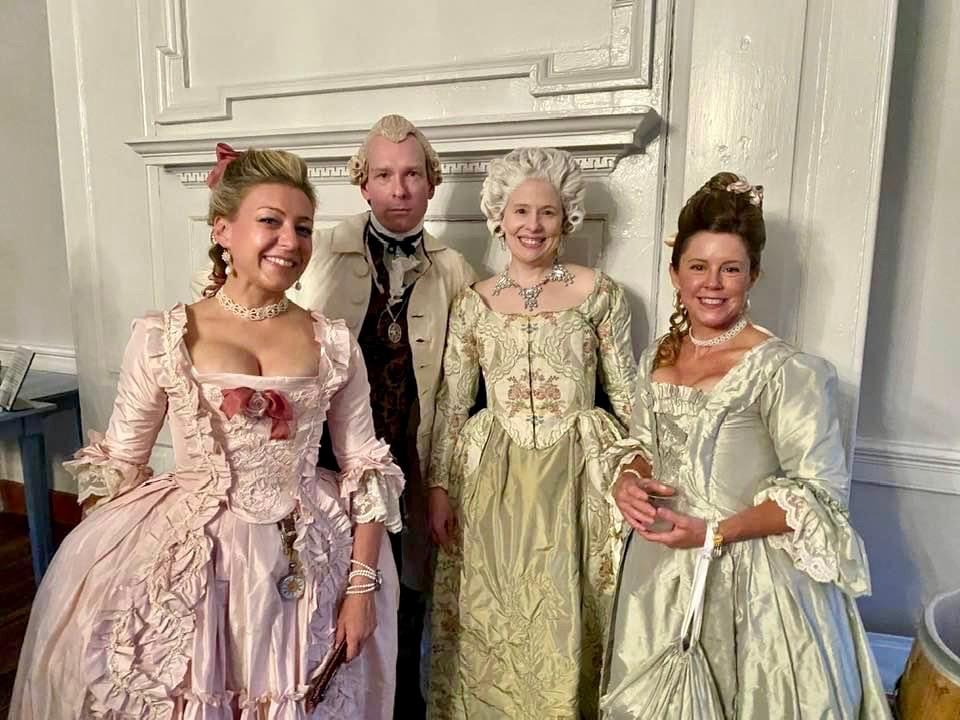
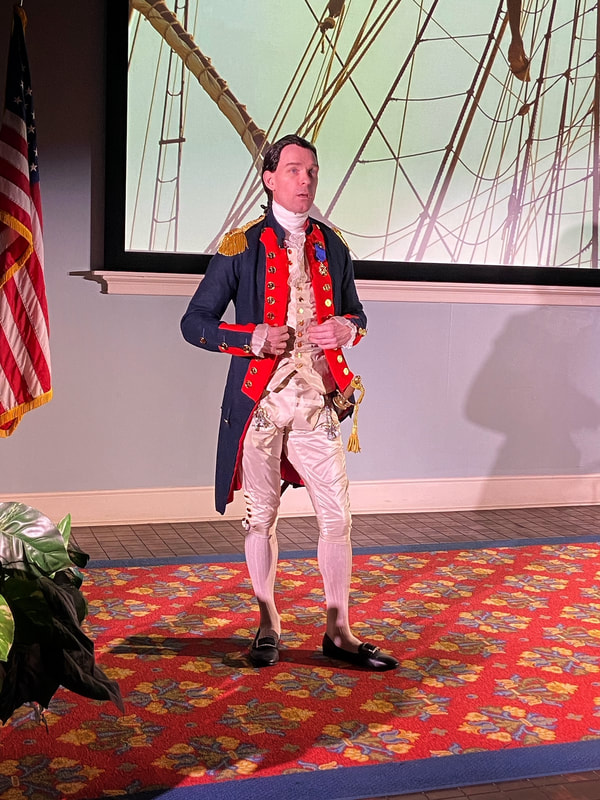
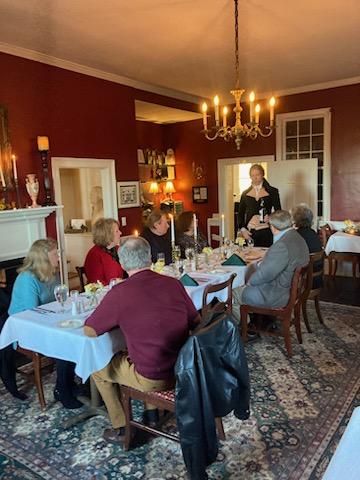

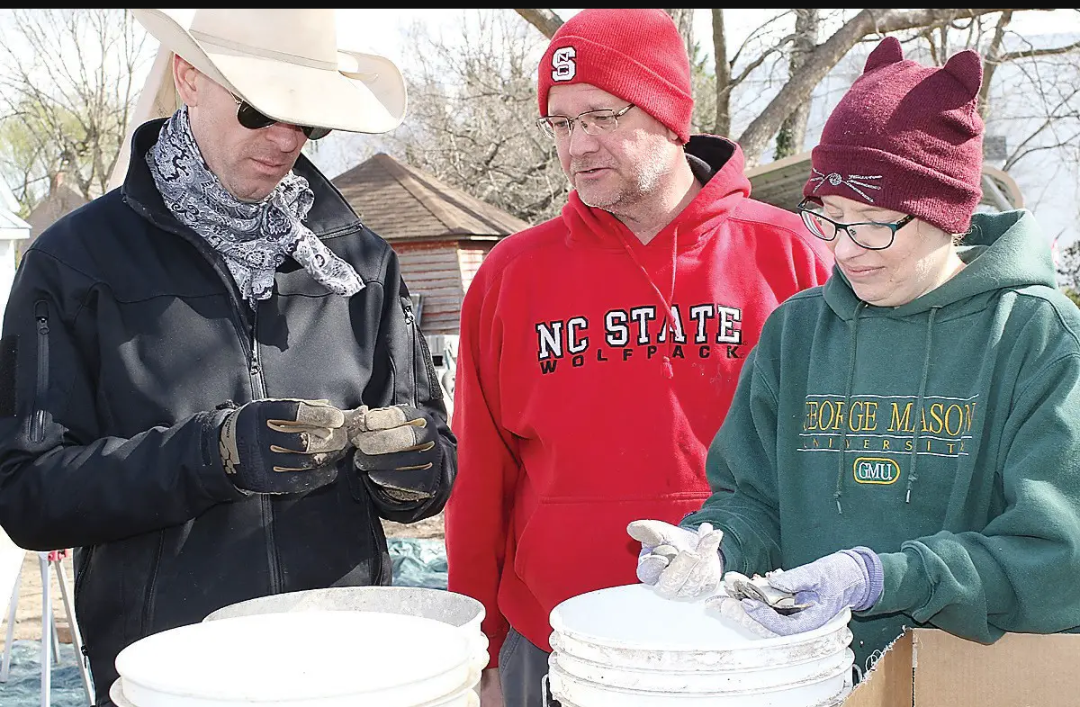
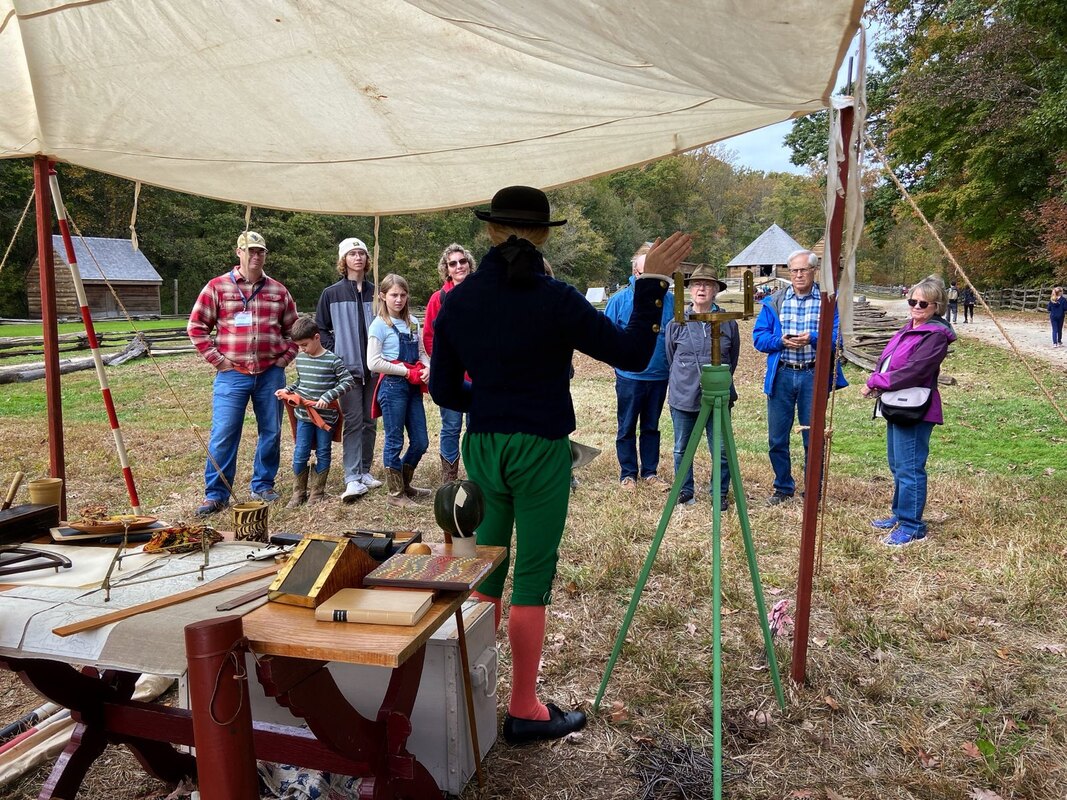
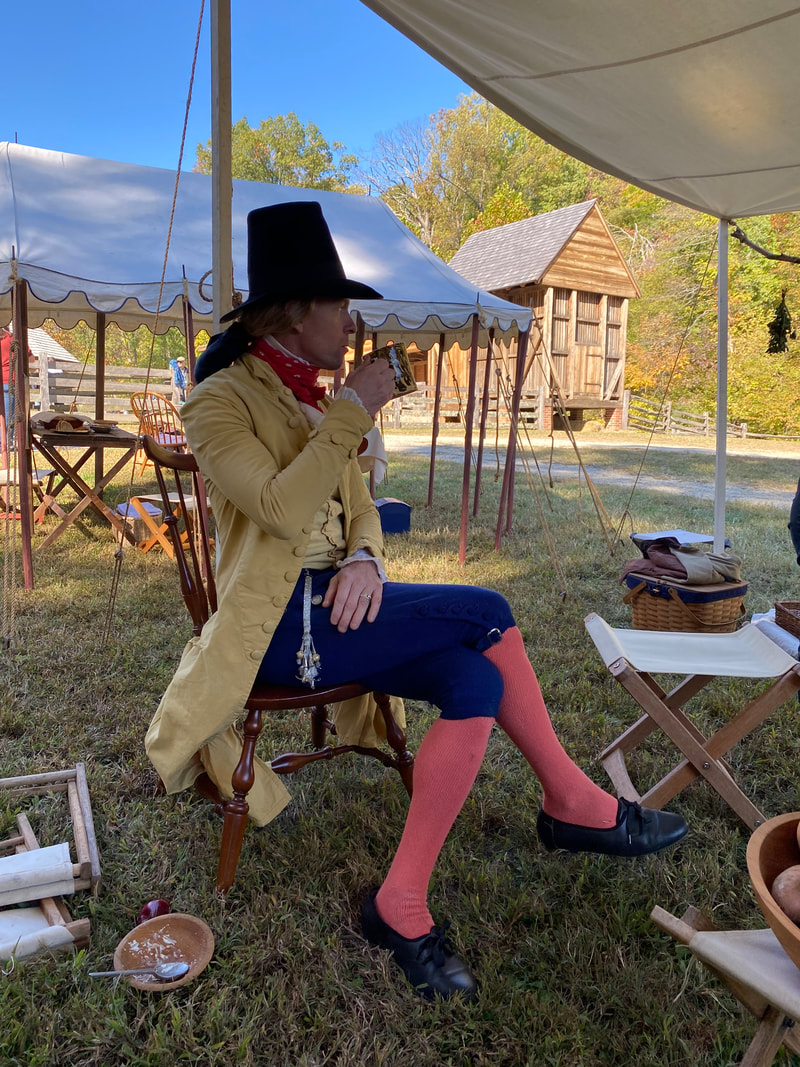
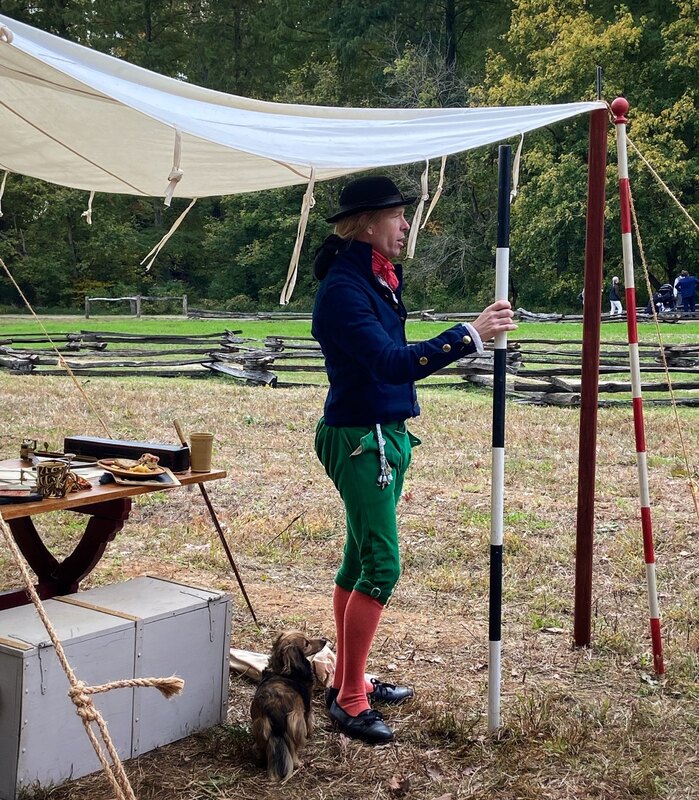
 RSS Feed
RSS Feed